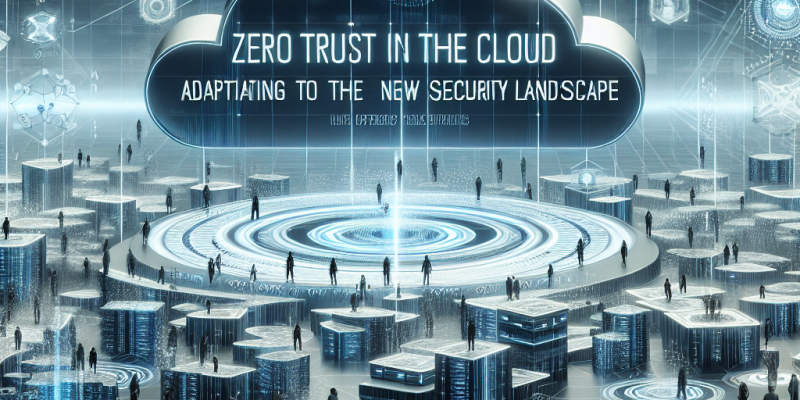Zero Trust in the Cloud: Adapting to the New Security Landscape of 2025

As we navigate through 2025, the concept of Zero Trust has become a vital part of cybersecurity, especially in cloud environments. This model is emerging as a fundamental strategy for organizations looking to secure their digital assets in an increasingly complex threat landscape.
Understanding Zero Trust
Zero Trust is a security framework that operates on the principle of “never trust, always verify.” Unlike traditional security models that assume everything inside a network is secure, Zero Trust treats both internal and external networks as potentially hostile. This approach requires continuous verification of user identities, devices, and access permissions.
Why Zero Trust is Important in the Cloud
-
Increased Cloud Adoption: As businesses continue migrating to the cloud, the perimeter has effectively vanished. Traditional security measures are no longer sufficient. Zero Trust addresses these concerns by focusing on who accesses data and from where.
-
Remote Work Expansion: With many organizations adopting hybrid work models, employees need secure access to resources from various locations. Zero Trust provides a robust framework to ensure that only authenticated users can access sensitive information, regardless of their location.
-
Rise in Cyber Threats: The number of cyberattacks is on the rise, and cloud environments are prime targets. By implementing Zero Trust, companies can minimize the impact of potential breaches, as every access request is treated with scrutiny.
Key Components of Zero Trust in Cloud Security
To effectively implement a Zero Trust model in the cloud, organizations should focus on the following key components:
1. Identity and Access Management (IAM)
IAM solutions are crucial for ensuring that only authorized users can access specific resources. This involves using multi-factor authentication (MFA), role-based access controls (RBAC), and continuous monitoring of user behavior to detect anomalies.
2. Micro-segmentation
Micro-segmentation involves dividing the network into smaller segments to contain potential breaches. By restricting access within these segments, organizations can ensure that even if an attacker gains access to one area, they cannot easily move to others.
3. Encryption
Data encryption, both in transit and at rest, is critical in protecting sensitive information. Even if data is intercepted, encryption makes it difficult for unauthorized users to make sense of it.
4. Continuous Monitoring
Implementing tools for real-time monitoring is essential. This allows organizations to detect suspicious activities promptly and respond quickly to potential threats.
Challenges of Implementing Zero Trust
While adopting a Zero Trust model offers significant benefits, there are challenges that organizations may face:
-
Cultural Resistance: Employees may find new security measures inconvenient or invasive. Training and communication are vital in managing these changes.
-
Integration with Legacy Systems: Many organizations have legacy systems that may not easily integrate with modern Zero Trust tools. A phased approach is often necessary.
-
Cost: Transitioning to a Zero Trust architecture can involve considerable investment in new technologies and training.
Future Outlook: Zero Trust in 2025
As we look ahead, the importance of Zero Trust will continue to grow. Here are some predictions for 2025:
-
Widespread Adoption: More organizations will fully embrace Zero Trust architectures, making it a standard practice across various industries.
-
Automation and AI: The integration of artificial intelligence in Zero Trust implementations will enhance analytics and response capabilities, making security measures even more effective.
-
Regulatory Compliance: With evolving regulations, Zero Trust will not only be a best practice but also a compliance requirement for many industries, especially in sectors like finance and healthcare.
Conclusion
In 2025, adapting to the new security landscape means embracing the Zero Trust model in cloud environments. Companies that prioritize this approach will be better positioned to defend against ever-evolving cyber threats, while also accommodating the demands of modern work. As we move further into this digital age, Zero Trust will undoubtedly remain at the forefront of cybersecurity strategies.














